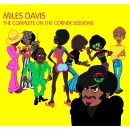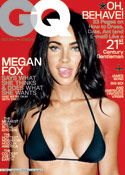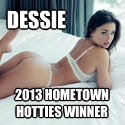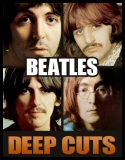Music Home / Entertainment Channel / Bullz-Eye Home
 Buy your copy from Amazon.com
Buy your copy from Amazon.com
| Miles Davis: The Complete On the Corner Sessions Released: 2007 |
When On the Corner first came out in 1972, the jazz establishment had had enough. Enough of free jazz, enough of rock fusion, enough of keyboard players piping their Fender Rhodes through stompboxes and passing off wah and distortion as Jazz with a capital J. The record was sort of the last man standing after the Bitches Brew Fillmore hangover wore off and the hippies sobered up to begin raising all those families their free love created. (The white folks who got into Bitches Brew went on to play softer Weather Report records). The critics teed up On The Corner and swung their drivers with the ferocity of Tiger in red on a Sunday, making it the poster child of everything wrong with jazz: Tape-loop rhythms, classic precision jazz drumming replaced by hard funk, Miles using gimmicky effects and playing droning solos instead of the virtuoso melodic solos of his 1950s and '60s acoustic heyday. It was summarily panned and tossed into the dumpster.
Miles could have cared less. Sure, in his autobiography Miles, one senses frustration over his being misunderstood during this period of his creative output, but he never once questioned himself and where he was taking his art.
Without Miles' strong instincts, the music featured on this retrospective covering the sessions which gave birth to the albums On the Corner, Big Fun, and Get Up With It probably would have been a steaming pile of masturbatory sub-jazz. Three and a half decades later, however, one can hear there clearly was magic going on in the studio, played by a bunch of colorful cats who went on to have their own careers—none more unexpected than Mtume (James Mtume, son of former Miles sideman Jimmy "Little Bird" Heath), the youthful percussionist who scored a pop hit with "Juicy Fruit" 10 years later.
That was Miles Davis in a nutshell -- always finding interesting people to play with and inspiring them to play beyond their abilities. Electric jazz aficionados will appreciate the usual cast of guests from the era appearing here: Herbie Hancock, John McLaughlin, Chick Corea, Jack DeJohnette, and more. The instrumentation's adventurous, with lots of congas, flutes, sitar, and at-the-time state-of-the-art synths. Yet these novel sounds never get in the way of the ever-present, absolutely dirty rhythm guitar and bass lines that out-Shaft the Shaft soundtrack.
The original On the Corner was kinda lame, in one sense: It plays like a sampler record an indie label might have released to induce listeners to buy full-length CDs—the jams aren't developed as much as it seems they should be. If the original album was the tip of the iceberg, the new box is the iceberg. The box isn't a rehashing of a bunch of crap for the sake of re-releasing it—it's the answer to the question every devotee of Miles' electric era has asked: "Whatever happened to all that tape?" It's all here. Unreleased tracks, extra takes, fully developed jams that were previously edited to fit onto a side of vinyl, longer solos. More wah. More fuzz. More hard-driving guitar, in some places so distorted it will make Trent Reznor recoil. And yeah, Miles plugged his trumpet into those same stompboxes, and if that offends your high-art perception of what jazz should be, throw Miles' 1958 reincarnation of Porgy & Bess on the record player, stop bitching, and leave the rest of us alone.
After listening to Miles and his colleagues bash out banging-hard funk like the full 19 minutes of "On the Corner," the Albert King-style blues-funk "Red China Blues," the rump-shaking "Billy Preston," the AM-radio light-pop "Minnie" and the frenetic rhythmic fusillade of "What They Do," it's quite clear that this unit was more than a funk band. They were high-level jazz talents painting with funk colors, instant masters of the genre, out-funking the pop-chart dinosaurs of the day on the first take of songs they'd never rehearsed. That's not to take away a scintilla of notoriety from Kool & the Gang or my man Sly Stone, it's saying that Miles and his band transcended funk, rock, and jazz, looking down from Olympus but speaking in musical terms that we could understand.
And critics who couldn't see that because of their own hangups about funk in general, the album's cover depicting an urban scene, or Miles' deliberately reaching out to a young black audience—well, they were wrong. This box showcases some of the dirtiest, most beautiful grooves ever heard, and when the guys from groups like Galactic and Medeski, Martin, and Wood hear these tapes, they will find years' worth of inspiration for their own future projects. Hip-hop and club deejays will devour, splice, remix, and sample this material, not unlike original producer Teo Macero did in the first place. While On the Corner might have already provided the DNA for the Beastie Boys' Paul's Boutique era, this box could still launch a thousand fresh rap beats, jam-band solos, and house records.
Maybe the rest of jazz and pop-music fandom won't get it. Too bad for them; it wouldn't be the first time it’s happened with this particular set of tracks.
mojo@bullz-eye.com






